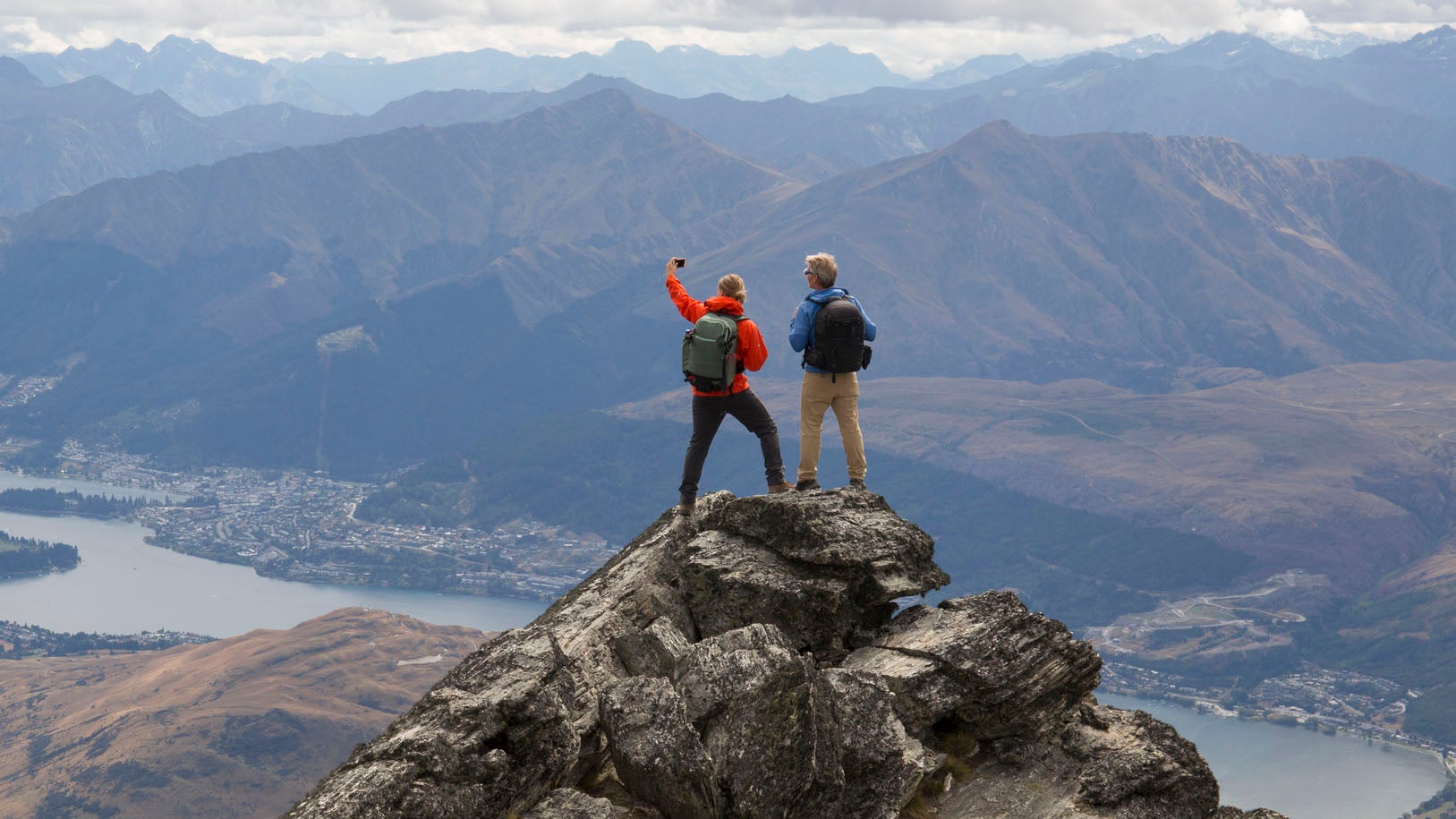For better or for worse, social media is here to stay, and thatŌĆÖs as true in the outdoors as anywhere else. Most of us have a Twitter, Instagram, Facebook, or TikTok account, and those platforms have come to play a central role in how outdoorsy people share their adventures with each other and the world at large. But while they can be a source of inspiration, a new study suggests that they could be getting some people into serious trouble.
When a tourist or hiker falls from a high place or gets charged while photographing an animal, internet commentersŌĆÖ knee-jerk reaction is often to blame it on clout-driven selfie-seeking. ThereŌĆÖs some evidence that they may not be off base: Researchers in Turkey injured or killed while trying to take photos and found that 43.2 percent of accidents took place in nature, with cliff edges being a preferred site for selfies. According to the study, one hiker who gets away with a risky selfie may lead to others doing the same, and visitors may come to view certain destinations as being less risky over time.┬Ā
This was not the first time authorities looked into the correlation between social media and outdoor dangers. In 2018 the Los Angeles County SheriffŌĆÖs Department SAR attributed an uptick in rescues to social media users publicizing dangerous outdoor hotspots like cliffs, rock pools, and waterfalls.
Dr. Zachary Lu of University of California, Irvine and his team decided to quantify that risk. Published in Wilderness and Environmental Medicine in 2021, their article, , matched SAR and national park visitation stats with social media data to try to determine the relationship between traffic, social posts, and rescues.
Lu told me that the idea for the project arose from both his love for the outdoors as well as anecdotes of hikers getting themselves into sticky situations in search of social media pictures. He said his process had a goal: ŌĆ£How can we maximize the experience of everyone having fun while keeping them safe, and particularly as it pertains to social media?ŌĆØ┬Ā
ŌĆ£We developed this study in order to pilot or encourage the idea of, ŌĆśHey, what if we looked at numerical data in terms of social media platforms, in our case, Twitter, and do a head to head comparison [to see] if thereŌĆÖs any kind of association with search and rescue incidents in national parks?ŌĆÖŌĆØ Lu said. From a zoomed-out perspective, he says the study looked principally into visitation and search and rescue visits as a whole, while also evaluating correlations with social media.
Lu used Twitter to evaluate social media because of an existing relationship he had with the University of California, IrvineŌĆÖs School of Information, which had developed a program called . Using this software, the team was able to evaluate Twitter data ŌĆ£in order to get a historical count of the number of tweets related to certain keywords by area,ŌĆØ Lu said. He noted that other platforms such as Instagram or Flickr have data that are less available to researchers at this time.
The team procured visitor data from the visitor use database and SAR data from the U.S. Park Service SAR incidents dashboard from 2017. They considered recreational visits, developed site stays, backcountry visits, and tweets as independent variables, and SAR incidents and fatalities as dependent variables. As the team noted in their paper, they ended up with a mountain of data.┬Ā
┬ĀŌĆ£We analyzed the correlations between 180,216,375 recreational visits, 10,452,835 developed site stays, 1,956,935 backcountry visits, 183,744 tweets, 3,433 SAR incidents, and 181 fatalities that occurred in national parks during 2017,ŌĆØ they wrote.
What were their findings? All three types of visits (recreational, developed-site, and backcountry) showed positive correlations with SAR incidents. Backcountry visits had a stronger correlation with fatalities than developed-site stays, perhaps related to the inherently riskier nature of the setting. (While the researchers speculated that people calling for help in the backcountry might, on average, be more experienced and skilled than those calling for help in the front country, they noted that their study did not look at experience levels of SAR victims.)┬Ā
Those conclusions might not be surprisingŌĆöthe more people head outdoors, after all, the more chances there are for them to get hurt. Social media use, however, turned out to be an even better predictor of people getting into trouble: According to Lu, the strongest correlation they saw in their study was between tweets and mishaps leading to rescues or fatalities. Besides driving visitors to parks, authors suggest that ŌĆ£social media may be associated with SAR incidents via users motivating others to obtain photos or videos through risky or dangerous means.ŌĆØ┬Ā
On this point, Dr. Lu hopes that their research can be a part of the solution by encouraging social media users to share their adventuresŌĆöand consume othersŌĆÖ summit shotsŌĆöwith safety in mind.
┬ĀŌĆ£Hopefully it encourages peopleŌĆ”not necessarily [to use social media] to get themselves in sticky situations, but rather to share about their fun experiences and to motivate others to maybe share their own and build those experiences for themselves,ŌĆØ he says. ŌĆ£Because that ultimately leads to a culture of environmental stewardship, where we can really take care of our environment so that everyone can enjoy it.ŌĆØ
This story was originally published by Backpacker.com.┬Ā


